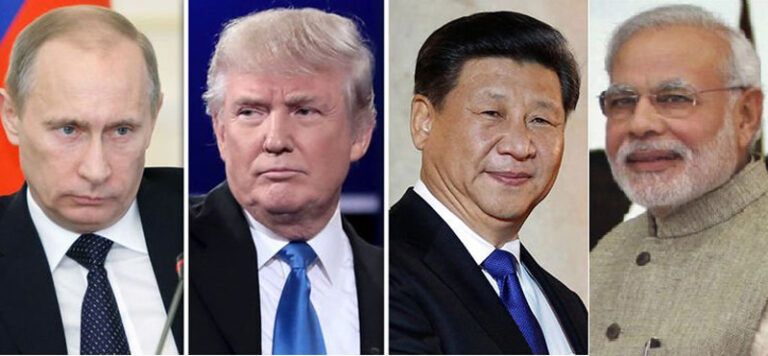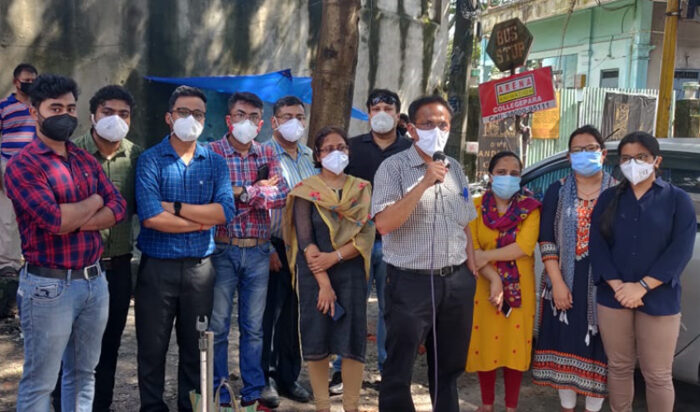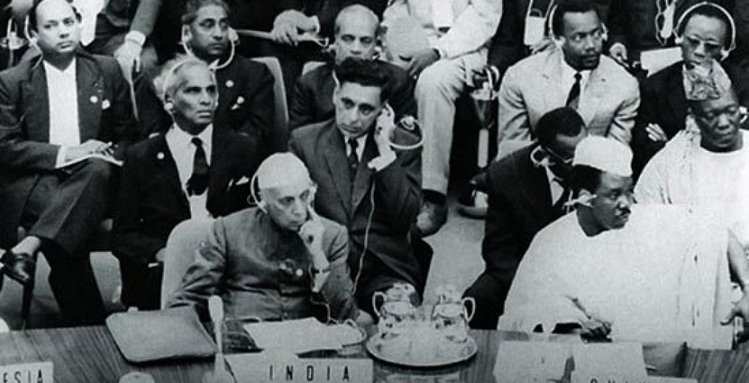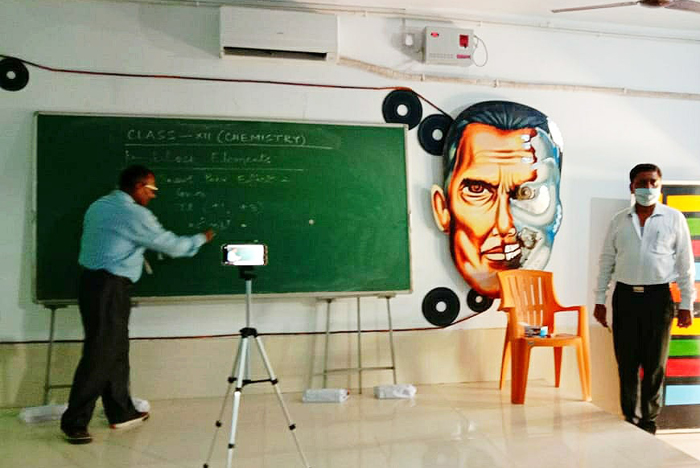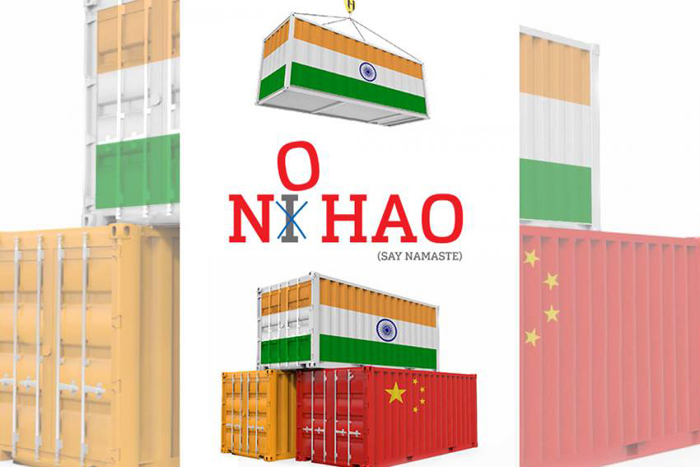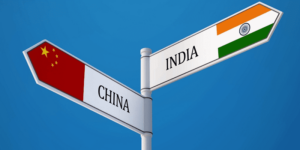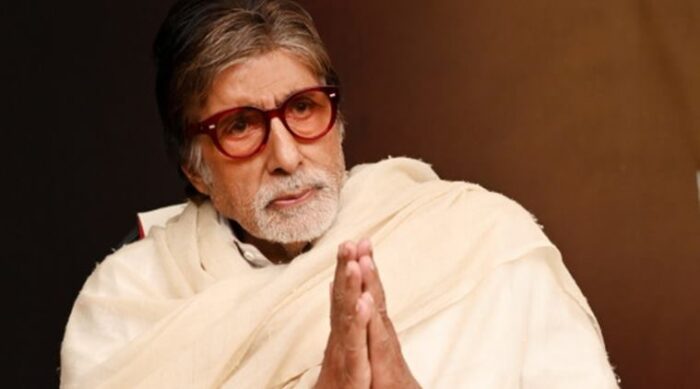I had begun the overview of the history of Indo-China conflict with the question: Can a student of history afford a sense of sadness over the missed historical opportunities for making another world possible? I admit that my melancholia has deepened while revisiting those days of miscarriage of high hopes for a decolonized world free of orgy of subjugation and exploitation, both internal and external as well as end of wars in the name of big nation’s ‘manifest destiny’ and ‘rightful place in the world’.
I have tried to enumerate the tolls of the tectonic fractures in global Communist camp since the sixties, more influenced by nationalist and geo-interests of Soviet Union and China than their ideological rifts, as well as its deadly impacts on Left and Non-Aligned Movements. It was deeply instrumental in the Pyrrhic victory of the US-led Western colonial and neo-colonial powers in the post-WWII Cold War. Soviet Union ultimately suffered massive implosion in the early nineties due to long-drawn internal and external pressures. Its invasion in Afghanistan in 1979 not only became the final catalyst for its disintegration to the eternal glee of the US-led West but also triggered the new waves of clash of religious fundamentalists of all hues across the world, primarily thanks to CIA-Saudi-Pakistan axis.
Now Russia under neo-fascist Vladimir Putin is fast resurrecting the legacy of the Tsarist Empire in active collaboration with the deeply conservative and ultra nationalist Christian Orthodox Church to get back its former superpower status, ironically of Stalin-led Soviet days. Its territorial claims in Ukraine to Georgia and proxy wars have set the tune for new Cold War with the US and its NATO allies. Officially, Lenin’s Russia is back to God now, thanks to godly Putin’s new constitution that allows him to be in the office almost for life like his buddy and China’s new strongman, ‘papa Xi’.
Putin’s soulmate Donald Trump has reasserted the reign of white supremacist, Islamophobic, conservative Christian and ‘America First’ policies of far-right Republicans which have even embarrassed George W Bush during the latest explosion of Black rage after the murder of George Floyd by White police across the land. How can we forget the junior Bush who had presided over the US during catastrophic 9/11 terror attacks on Twin Towers by the CIA-Pentagon’s Frankenstein, Osama Bin Laden and his Al Qaeda? Foxholed in a desert hideout during the attack, this collaborator cum crusader against Jihadi terror devastated Afghanistan, Iraq and Syria to create the cradle for another monster, ISIS. Across the Atlantic, Putin and Trump’s ‘family values’ are now anti-women, anti-LGBT and against ‘other queer people who are violating God-ordained natural-social order’.
Italy’s Salvini, Hungary’s Orban, Turkey’s Erdogan, Israel’s Netanyahu, Brazil’s Bolsenaro and India’s Narendra Modi– to name a few of the world’s other rulers– now confirm the rise of ultra nationalists, neo-fascists as our destiny-makers. These dictatorial males are unabashedly patriarchal, religious bigots or social conservatives and pathological liars. United in their love for corporate-led growth and market fundamentalism while being hateful and suspicious of poor and marginal communities, these demigods are also angels of death to the environment and plunder of natural resources in their role as patron saints of global resource wars.

In the East, ‘reawakened China’s new helmsman, Xi Jinping is said to have amassed absolute power, unprecedented after Mao. Mao’s dream for a socialist China with ‘relentless class struggle against internal capitalist-roaders’ died with him. The high priests of Post-Mao China have been chanting mantras for the market-state marriage to create a Chinese brand of socialism which has gradually won the internal discourse since the late eighties. They have gained popular legitimacy among Han majority, particularly among the neo-rich urban middle class, by cleverly manipulating Mao’s nostalgia for imperial glory to their end while discarding his egalitarian socio-economic ethos and affinity to poor peasantry. The one-party state capitalism under the red banner has reinforced ancient Confucian bureaucratic norms that harp on obeisance to social-political power hierarchy.
In the NAM states, ‘moderate and neutralist’ Nehru’s vision of a secular, socialistic and democratic India has gradually faded away under his successors. Today’s claimants to India’s civilizational glory dismiss his brand of composite nationalism and mixed economy. His ‘radical-turned pragmatic’ partners — Joseph Broz Tito of Yugoslavia, Fidel Castro of Cuba and Abdul Gamal Nasser of Egypt too have withered away. Their realms have either disintegrated by ethno-religious wars or mellowed down before market fundamentalists and US-led ‘free world’ after their death.
In Africa, Patrice Lumumba, the prime minister of Belgian Congo, today’s Zaire who advocated Pan-African identity over tribal differences and nationalization of diamond and other mineral mining from the centuries-long plunder by the European companies was brutally murdered by CIA- Belgians and native military in 1961. Ghana’s Kwame Nkrumah, Kenya’s Jomo Kenyatta and Tanzania’s Julius Nyerere—all the stalwarts of anti-colonial movements and first rulers of their lands after freedom too later lost their wider vision on socio-economic changes and compromised with the neo-colonial West, sometimes to save their own power only.
In the US, both Martin Luther King and Malcolm X were killed irrespective of their ideological differences on violence and Black power. The veteran of Algerian national liberation struggle and West Indian thinker Franz Fanon who had dissected minds of both white colonizers and black colonized to formulate new ideas about revolutions died of cancer. Steve Beko, younger to all of these leaders-intellectuals but in the same line of the last two through his ideas on Black Consciousness, was beaten to death by South African Apartheid regime in 1977. The most towering black leader of the land, Nelson Mandela was jailed for 27 years by the racist white power. Madiba survived to see and preside over post-apartheid SA but left a deeply divided State and society.
The last epitome Afro-Asian-Latin American unity and quintessential Internationalist Che Guevara was killed by CIA and Bolivian military Junta in 1968. Despite the success of armed liberation movements in Indo-China and Africa (Angola, Zimbabwe and Mozambique), fratricidal fights along ethno-nationalist lines gradually killed the possibilities of a global renewal of revolutionary and democratic internationalism. The giant idealists were discarded as hyperopic and replaced by myopic dwarfs across the postcolonial world.

A parting view on India-China situation
The current hide tide of Chinese nationalism is the ‘consequence of massive domestic propaganda’ since the early nineties. Will Hutton, a British China-expert who advocates co-opting of Beijing in the global capitalist system more mentioned it in his book, writing on the Wall, China and the west in the 21st century (Abacus, 2007). As the Chinese communist party top brass including military generals keep on their annual stocktaking of growth in ‘comprehensive national power’, the party asked its central propaganda department in 1994 to focus on ‘patriotic education’. Brainwashing of Chinese students begins from nursery to universities with ‘scant regard for historical truth’.
Quoting non-government Chinese sources, Hutton said: “suppression of inconvenient truths- such as the expansion of Qing dynasty… Chinese atrocities during the war against Japan- are downplayed or ignored. There is no mention of China’s recent wars. There is almost hysterical paranoia and distrust of foreign intentions.” Chinese refusal to accept the universality of Human rights and denial of the oppression on Tibetan-Uyghur-Mongolian people’s goes hand in hand with its apologists’ paeans to the almost total ‘Hanification’ of China and consequent ‘national unity’ as a crucial factor behind its ‘current colossal strides in the economic and military fronts’. These are no less sanctimonious than American-European hypocrisy on human rights violations in China.
Hutton feared that Chinese leaders, ‘having chosen to ride the nationalist tiger, could easily find that it rounds on them, forcing them or their successors into warlike actions to match their words’. It may explain the incumbent Xi Jinping regime’s behaviors as it has triggered more border clashes not only with India but also with its eastern neighbors around the South China Sea, from Japan to Philippines. As I had mentioned earlier, China is flexing its economic and military muscles, the first more for now from Gabon to Greenland. It is not aimed at creating a multi-polar world with poor and middle income nations and their peoples to get their just shares of wealth and income as Xi claimed but to make the 21st century a Chinese century.
India Today
Despite the belligerent rhetoric, India is actually imitating China today. A resurgent and hysteric Hindu nationalism of Narendra Modi and Sangh Parivar is calling for complete Hinduization in the name of ancient Hindu civilization. School textbooks are being saffronized completely to replace the ‘sicular-libtard’ history with Hindu hyper-nationalist hagiography and mythology. Any opposition to the overcentralization of Indian nation-state and demolition of democratic structure to impose a permanent one party rule under the mantra of ‘Ek Desh, ek Bidhan, ek Nishan aur ek Neta’ is being labeled as ‘anti-national’ and getting ruthlessly steamrolled. Modi’s ‘aspirational India’ wants to be the next superpower on the strength of predominantly young population available for cheap but skilled labor, the so-called ‘demographic dividend’, increasing the middle class market and service sectors. Hoping to turn Corona pandemic into an ‘opportunity’, Modi has been trying to lure global finance capital as well as multinationals who may fly out of China and chose India as its major investment beehive and new assembly lines for smart-phones to fighter planes. He has also called for building a ‘self-reliant’ and making ‘local brands global’ to boost Indian manufacturers, mainly the regime’s crony capitalists.

The Modi regime’s contests with China in economic and military fronts are deeply linked to ongoing war between US-China rivalries for global hegemony. India’s military involvement in US-led naval exercises in Indian Ocean and South China Sea is aimed at checkmating China’s mighty One Belt One Road (OBOR) project in Indian neighborhood as well as encirclement of sea lanes crucial for Beijing’s oil supplies. Donald Trump-led US establishment is more than happy that India is finally coming out of the Nehru-era non-aligned mindset and firmly joining its camp against its current main challenger.
Without naming China, Modi thundered before the Indian troops after the June 15 clash in Galwan valley that the ‘world has made up its mind for fighting the ‘expansionism’. India will continue to expand its strategic border security infrastructure for better movement of men and materials, he asserted to undo the damage to his brave nationalist image done by the killings of 20 Indian soldiers. The claims of more than double Chinese casualty was also meant for assuaging the hurt ego of his core constituency– Hindu upper caste males in the greater Hindi heartland.
The bitterness between Beijing and New Delhi notwithstanding, I would like to draw the reader’s attention to the fact that both countries are now part geo-political resource wars between groups of market and growth fundamentalists aspiring to neo-colonial powers. The votaries of top-down ‘development’ and ‘trickled down prosperity’ are ruling the roost, both in China and India. Their resource war is turning the Tibetan plateau, the third pole of the world and Water tower of Asia into a highly compromised climatic zone already vulnerable due to global warming. Lives and livelihood of Millions of poor and marginal people in south and south-east Asia depend on trans-boundary major rivers including Howang Ho, Yangtze, Mekong, Sind, Brahmaputra and Ganges. They would suffer more droughts and floods as well as air and water pollution due to mutual choking games on the roof of the world.
Another world is still Possible
Nevertheless, I share the optimism of the new generation and believe that another world is still possible beyond narrow national interests. Rays of new hopes are refusing to die, from Rosava to Seattle. But first, ‘let the dead bury their own dead’ as the Biblical saying goes. Youth today should not repeat the follies of the dead of earlier times and half-dead like us. Particularly, we must bury our blind faith in the infallibility of the prophets including their current avatars.


